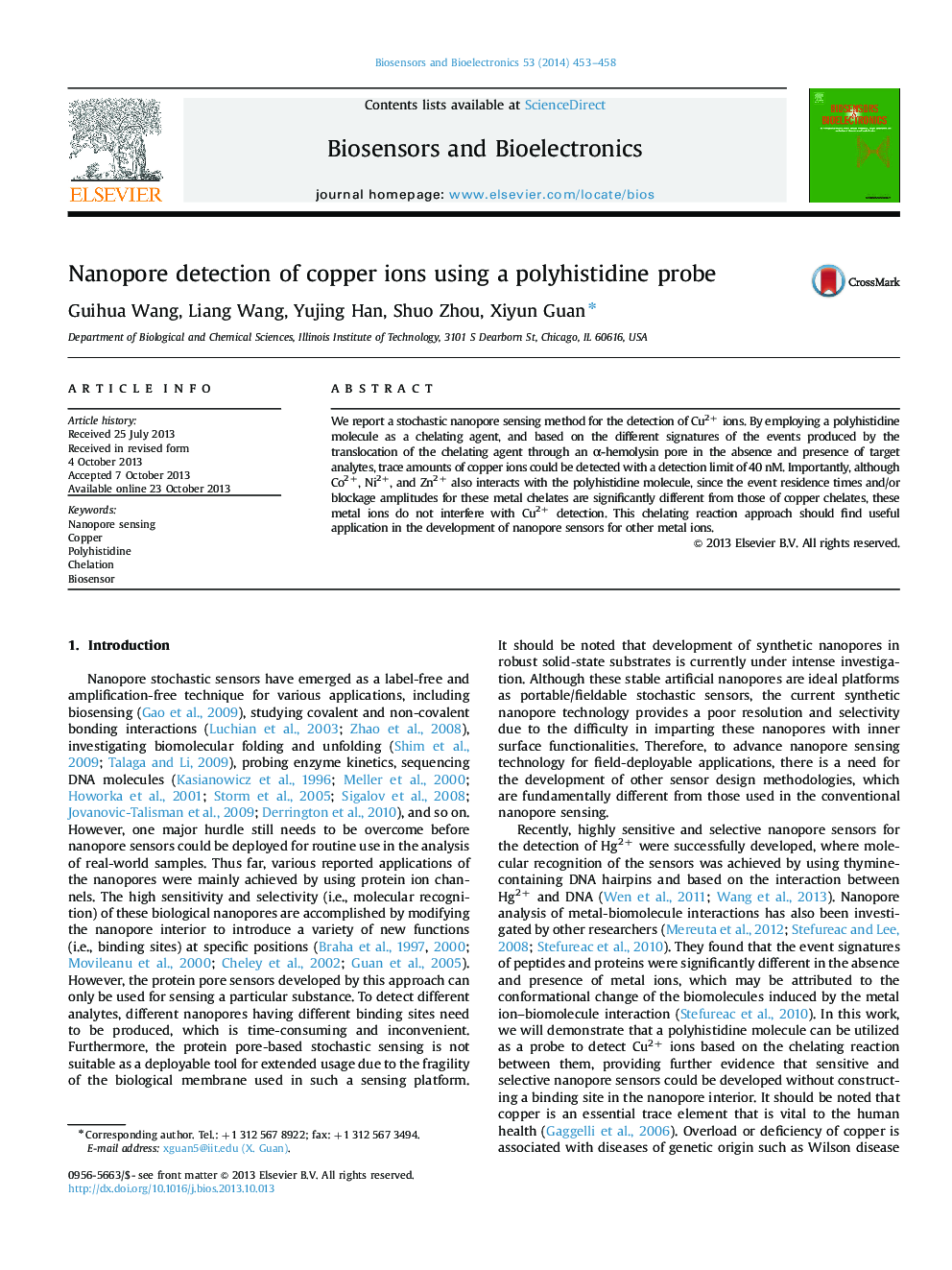| Article ID | Journal | Published Year | Pages | File Type |
|---|---|---|---|---|
| 866724 | Biosensors and Bioelectronics | 2014 | 6 Pages |
•We developed a sensitive stochastic nanopore sensor for the detection of Cu2+ using a polyhistidine probe as the chelating agent.•The sensor was highly selective to Cu2+ ions.•Experimental conditions such as the polyhistidine probe, solution pH, and the applied voltage bias significantly affected the sensor sensitivity.•The chelating reaction approach simplified the nanopore sensor design.
We report a stochastic nanopore sensing method for the detection of Cu2+ ions. By employing a polyhistidine molecule as a chelating agent, and based on the different signatures of the events produced by the translocation of the chelating agent through an α-hemolysin pore in the absence and presence of target analytes, trace amounts of copper ions could be detected with a detection limit of 40 nM. Importantly, although Co2+, Ni2+, and Zn2+ also interacts with the polyhistidine molecule, since the event residence times and/or blockage amplitudes for these metal chelates are significantly different from those of copper chelates, these metal ions do not interfere with Cu2+ detection. This chelating reaction approach should find useful application in the development of nanopore sensors for other metal ions.
